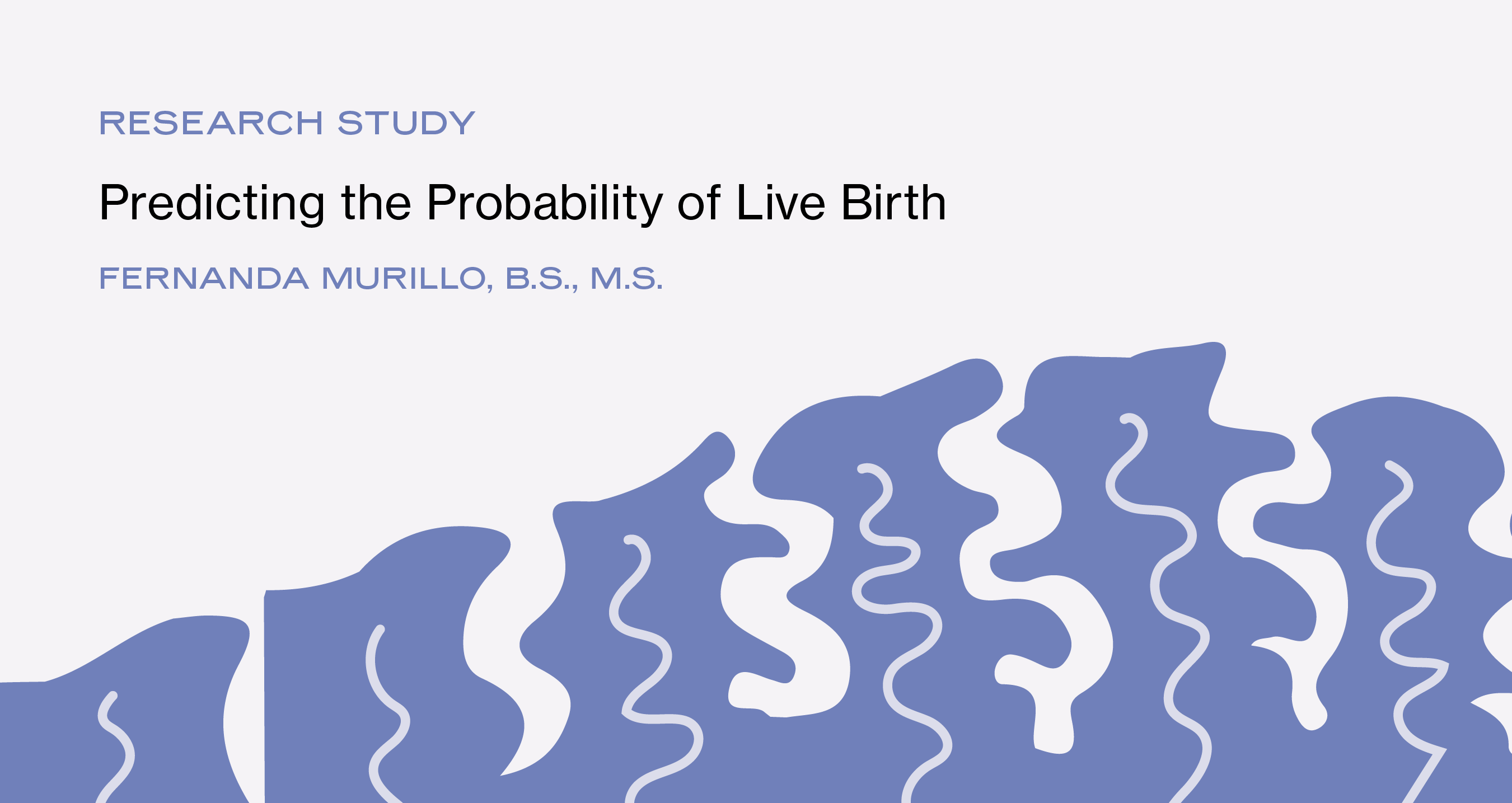Why Is It Important to Be Able to Predict the Probability of a Live Birth?

At the 2022 American Society for Reproductive Medicine (ASRM) conference in Anaheim this October, one of Alife’s data scientists, Fernanda Murillo, B.S., M.S. presented her poster “A Comprehensive Model for Predicting the Probability of Live Birth Prior to the Start of Progesterone during Artificial FET Cycles.” The ASRM conference was a valuable opportunity for Alife’s data scientists to share research with other fertility experts and learn from their work, as well, furthering our mission of making advanced fertility care better and more accessible for all.
We had a chance to chat with Fernanda about her research and find out why it’s important to be able to predict frozen embryo transfer success rates, and how greater access to data can assist doctors during the decision making process for each patient.
Our interview with Fernanda about her research focuses a lot on the endometrium (the layer of tissue lining the uterus, also known as the “uterine lining”) and how its growth and thickness impact embryo implantation. For more information on how to optimize your endometrium during IVF, check out our blog post on this subject!
Interview with Alife Data Scientist Fernanda Murillo, B.S., M.S.:
What is an artificial FET cycle and how is it different from a fresh embryo transfer?
After egg retrieval and embryo culture, the patient can receive either a fresh or frozen embryo transfer. With a fresh transfer, the embryo will be transferred into the uterus three to five days after fertilization and the remaining embryos are frozen for a later transfer. With a freeze-all policy, which is becoming increasingly popular, all the embryos are frozen after embryo culture, and the transfer occurs in the future. Additionally, with a frozen embryo transfer (FET), there is the option to undergo hormone replacement therapy (HRT, also called an “artificial FET”) to prepare the endometrium for transfer. It is crucial for a successful transfer that the endometrium is receptive in order for the embryo to implant.
What role does progesterone play in an artificial FET cycle?
Artificial FET cycles use hormone replacement therapy to mimic a natural menstrual cycle and prepare the uterus for the embryo implantation. There is much variation in FET procedures, but most artificial cycles start with supplementing estrogen for around 2 weeks to mimic the follicular phase (the first two weeks) of a natural menstrual cycle. During this time, levels of estrogen rise as the endometrium thickens to prepare for pregnancy. Progesterone also plays a crucial role in artificial FETs. Progesterone levels rise after the follicular phase; this second phase is called the luteal phase. Rising progesterone levels mature the uterine lining so an embryo is able to implant.
Why is it important to be able to predict the probability of a live birth before starting progesterone during an artificial FET cycle?
The end of the follicular phase is a common decision point for doctors to decide whether they want to cancel or continue with the FET. Doctors will usually look for an endometrial thickness of about 7mm. Thickness less than 7mm is associated with lower pregnancy rates, and if the endometrium is too low at the end of the proliferative phase, the cycle can be canceled. If a patient’s endometrium is sufficiently thick, the patient will get started on progesterone to promote the final phase of endometrial preparation before embryo transfer.
By predicting the probability of live birth before the start of progesterone, we were able to understand the parameters that have the greatest impact on successful outcomes before the decision point. We saw that endometrial thickness is strongly, positively correlated with live birth rate, along with many other parameters related to patient, embryo, and endometrial response. This could help identify at-risk cycles and set expectations for success by using all these parameters together to predict the probability of live birth.
How did you collect data for this study?
Data for this study was collected from a single IVF clinic in the U.S. We used EMR data and filtered for autologous frozen embryo transfers. It consisted of 5,813 FETs from 4,133 patients between 2014-2021.
What did you discover during this study?
The best endometrial preparation protocol is still unknown and up for a lot of debate; this study helped to understand the important parameters that impact successful outcomes in artificial FETs. We found that successful outcomes in artificial FETs are dependent on parameters related to patient, embryo, and endometrial response. By modeling all of these important parameters together, we can accurately predict live birth rate, which can help to identify cycles that are at-risk and set expectations for patients.
Recent Articles
Share this
Recent Articles

Learn everything you need to know about IVF
Join the newsletter for IVF education, updates on new research, and early access to Alife products.



